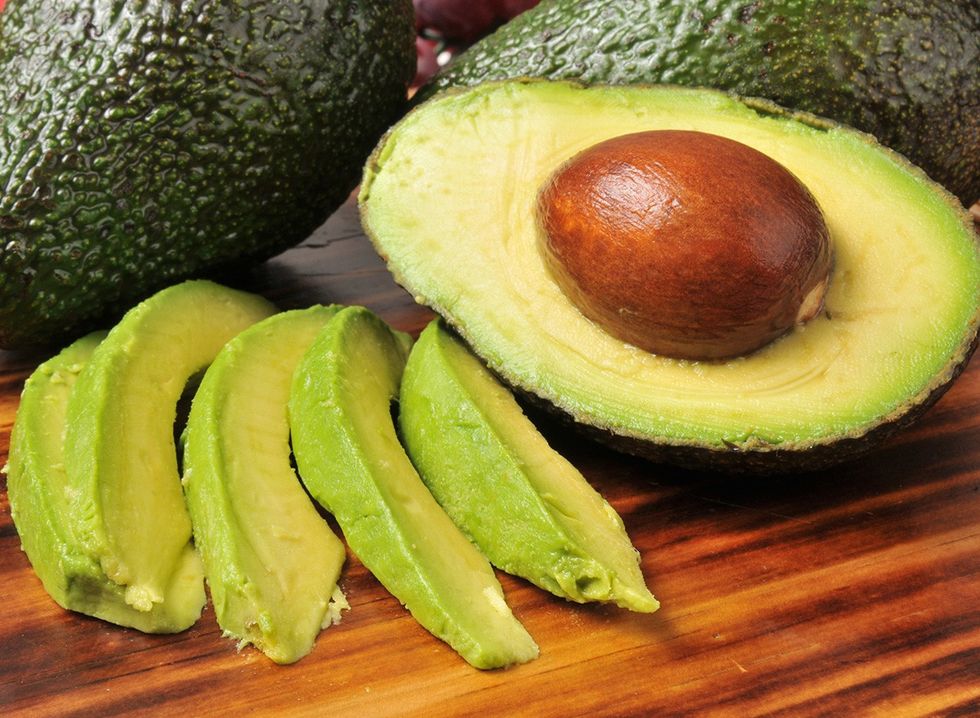Katie Dunlop, a fitness influencer and certified personal trainer, transformed her body and her life by shedding 45 pounds and getting rid of stubborn stomach fat. In a recent YouTube video, Katie shared the key dietary changes that helped her reach her goals. She revealed that her weight loss success wasn’t just about exercise; it involved being more mindful of her food choices and cutting out certain items that were sneaking extra calories and sugar into her daily routine.
Through consistency, dedication, and small, sustainable changes, Katie not only achieved her weight loss goals but also became an inspiration to thousands of others. By cutting out these six specific foods, which she once thought were healthy or harmless, Katie finally saw the results she wanted. Here's a look at the six foods she eliminated and how these small shifts made a big difference.
I Ditched Sugary Coffee Creamers
"I was a huge international delight girl, and this is not just to hate on this brand; it's just that it was my brand. I did international delight, French vanilla coffee creamer in my coffee every day," she says in the video. "So that was an excess of 20 to 25 grams of sugar first thing in the morning before 7:00 AM. I'm like, let's just get a little cup of sugar in here, and 24 grams of sugar is the daily recommended amount of added sugar."
I Cut Out Fiber and Protein Bars
"So I used to eat fiber bars or protein bars every single day. I would use them as meal replacements, thinking that they were healthy, but that wasn't the case," she says in the video.
"The problem with most of these bars is they have so many unnecessary added ingredients. So ideally, I try to keep my bars to 10 grams of protein or more, six grams of sugar or less, and it's hard to find any bars that have that, that also don't have just a bunch of chemicals in the ingredient list or fake sugars and stuff."
I Stopped My Nightly Frozen Yogurt Habit
"In college, we had a yogurt land down the street from us, and this is when frozen yogurt was it. And so we went a couple of times, and then we just kept going and kept going. We ended up going almost every single night we could walk to it," she says in the video.
"Well, in a small, like a cup serving of most of those frozen yogurts, they have 25 grams of sugar. And then on top of it, I felt like it was a gateway drug. I don't know how to describe it. Then you're like, oh, a little gram cracker, a little granola, that's healthy. Oh, a little coconut spread. You just start adding and adding, and all of a sudden, you have 500 extra calories a day that I didn't need."
I Gave Up the Special K Diet
"Does anyone remember the Special K diet? Anyone? Am I dating myself? Okay, so you know the Special K cereal, the brand cereal, they've removed all of this from their website. I went digging, I could find nothing. It was a real thing though," she says in the video.
"It was basically the idea that you were to swap two meals a day with Special K cereal, and they claim that you could lose six pounds and a pant size in two weeks."
RELATED: I Lost 70 Pounds and Beat Binge Eating With These 6 Steps
I Stopped Snacking on Veggie Chips
"I was duped into thinking that veggie chips were so much healthier than potato chips or the hint of lime toss. I was obsessed with it. They were veggies, wrong, wrong, wrong, wrong. It took me so long to realize that they were not at all healthier," she says in the video.
"The whole process that they have to go through in order to make them into chips basically just takes most of the nutrients out of them. And you are left with just a vegetable-colored shaped potato chip."
I Stopped Eating After 9 PM
"I had to stop eating after 9:00 PM, and let's just say there's not a magical time. So don't think, oh my gosh, 9:00 PM said I stopped eating at seven. This is not a problem for me. It may still be 9:00 PM, which was my time," she says in the video.
"The reason why I had to give myself a time at night to stop eating was because I would just keep going. Those cravings would hit me mentally or physically, and I didn't really know how to control them. The bottom line was I wasn't making healthy choices after 9:00 PM."
RELATED: Top 10 Leafy Greens to Burn Fat You Should Eat Every Day
The Power of Small Changes
"When I did that, those hundreds of excess calories were cut from my diet when I cut out the creamers with all the sugars and fake stuff. When I stopped eating all these fiber bars and cereals and all these little things that I thought were healthy, I actually started getting results," she says in the video.
"Yes, I was moving my body, but I wasn't doing anything crazy. You guys know I started 10 minutes a day and I moved up to, I do 30 to 45 minutes a day now. But it's those little tiny things that add up."
By making these changes and being mindful of her food choices, Katie was able to lose 45 pounds and transform her body. Her story highlights the importance of identifying and eliminating hidden sources of excess calories and sugar in our diets. And if you enjoyed this, take advantage of these 15 Quick Ways to Lose Body Fat Percentage in a Week.














 Shutterstock
Shutterstock Refined Grains to Whole GrainsShutterstock
Refined Grains to Whole GrainsShutterstock Almond Milk Shutterstock
Almond Milk Shutterstock Protein Ice CreamShutterstock
Protein Ice CreamShutterstock NutsShutterstock
NutsShutterstock

 Understanding True Protein ContentShutterstock
Understanding True Protein ContentShutterstock
 What To Do InsteadShutterstock
What To Do InsteadShutterstock Shutterstock
Shutterstock Shutterstock
Shutterstock Shutterstock
Shutterstock Shutterstock
Shutterstock Shutterstock
Shutterstock Shutterstock
Shutterstock Shutterstock
Shutterstock

 Shutterstock
Shutterstock
 ApplesShutterstock
ApplesShutterstock GrapefruitShutterstock
GrapefruitShutterstock AvocadoShutterstock
AvocadoShutterstock PineappleShutterstock
PineappleShutterstock KiwisShutterstock
KiwisShutterstock Low-Calorie FruitsShutterstock
Low-Calorie FruitsShutterstock PeachesShutterstock
PeachesShutterstock PapayaShutterstock
PapayaShutterstock Shutterstock
Shutterstock

 I'm a Nutritionist and These 9 High-Protein Snacks Keep My Clients Full While Losing 50 Pounds
I'm a Nutritionist and These 9 High-Protein Snacks Keep My Clients Full While Losing 50 Pounds
 Shutterstock
Shutterstock 2. Processed FoodsShutterstock
2. Processed FoodsShutterstock Shutterstock
Shutterstock Shutterstock/Prostock-studio
Shutterstock/Prostock-studio Shutterstock
Shutterstock Pro TipsShutterstock
Pro TipsShutterstock Shutterstock
Shutterstock Shutterstock
Shutterstock Shutterstock
Shutterstock Shutterstock
Shutterstock Don’t Drink as Much AlcoholShutterstock
Don’t Drink as Much AlcoholShutterstock Most Women on GLP-1s Are Making a Few Common MistakesShutterstock
Most Women on GLP-1s Are Making a Few Common MistakesShutterstock Soda and Sugary DrinksShutterstock
Soda and Sugary DrinksShutterstock Shutterstock
Shutterstock Eat BreakfastShutterstock
Eat BreakfastShutterstock And Improve Insulin SensitivityShutterstock
And Improve Insulin SensitivityShutterstock Belly Flab Strip Tip: Sugar and Fat Calories Leave Its Mark on Your BodyShutterstock
Belly Flab Strip Tip: Sugar and Fat Calories Leave Its Mark on Your BodyShutterstock Shutterstock
Shutterstock The Drugs Mimic the GLP-1 Hormone Naturally Produced by the BodyShutterstock
The Drugs Mimic the GLP-1 Hormone Naturally Produced by the BodyShutterstock 3. Deep-Fried ItemsShutterstock
3. Deep-Fried ItemsShutterstock